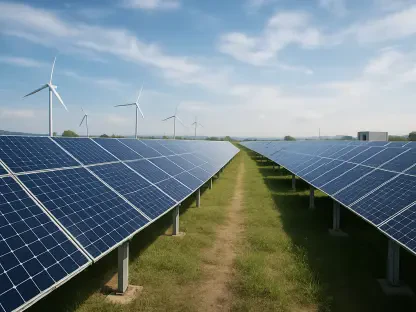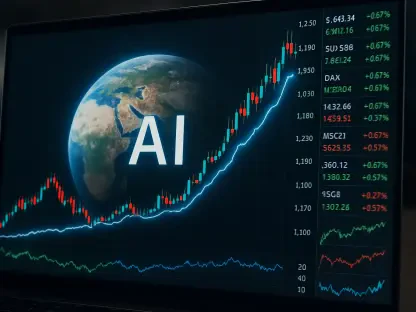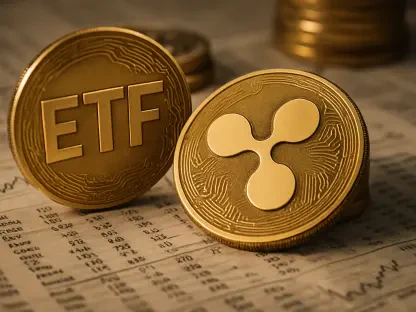The global economy has navigated a turbulent landscape shaped by the unpredictable policy shifts of the Trump administration, yet it has emerged with surprising strength and adaptability, defying initial fears of economic destabilization. From tariff barriers to stringent migration restrictions, what was often referred to as a disruptive storm cast a shadow over early forecasts. However, growth has not only stabilized but exceeded expectations in key regions like the United States, China, and parts of Europe. This unexpected resilience is driven by robust investment trends in transformative sectors such as artificial intelligence (AI), defense, and housing, alongside favorable financial conditions. As central banks adjust to this complex environment with flexible strategies, the interplay between policy disruptions and economic vitality offers a compelling narrative of endurance and opportunity, setting the stage for a deeper exploration of these dynamics.
Global Growth and Investment Trends
Revised Forecasts Signal Optimism
Amid the backdrop of policy uncertainties, major research centers have revised global economic growth forecasts upward, painting a picture of cautious optimism. The world economy is now projected to grow at a steady 3.1% in the current and upcoming year, a notable jump from the earlier estimate of 2.9%. This positive shift is particularly evident in the United States, where growth expectations have risen from 1.3% to 1.8%, and in China, with an adjustment from 4.2% to 4.6%. The euro area, too, shows marginal improvement, moving from 1.2% to 1.3%, with Spain leading the charge at an impressive 2.9%, up from 2.4%. Several factors underpin this momentum, including an AI-driven investment surge in the US, heightened defense spending in Europe, and resilient export performance in China. Additionally, a nearly 15% drop in oil prices since the start of the year, coupled with a 17% rally in global stock markets, has bolstered wealth creation, helping to mitigate geopolitical tensions and domestic policy challenges in various regions.
Investment Cycles as Growth Engines
A significant driver of this economic resilience lies in the emergence of a new investment cycle focused on AI, defense, and housing, which many see as a potential catalyst for sustained activity after years of stagnation. Early indicators of recovery in gross fixed capital formation are visible in countries like Spain and the US, particularly in the second quarter, supported by improved financial conditions among private entities following a decade of deleveraging. There is growing hope that this wave of investment could enhance productivity, offering a counterbalance to demographic challenges in developed nations and revitalizing long-term growth potential. However, caution remains regarding the risk of speculative bubbles, especially in AI, reminiscent of past overzealous investments in certain markets. Balancing this enthusiasm with prudent oversight will be crucial to ensuring that these investments translate into tangible economic benefits rather than short-lived hype.
Policy Challenges and Adaptive Strategies
Central Banks Navigate Uncertainty
Central banks, particularly the Federal Reserve, are grappling with an intricate economic environment shaped by policy disruptions, requiring a departure from traditional frameworks toward a more adaptive risk-management approach. The Fed’s recent interest rate cut serves as a proactive measure to shield against potential labor market softening, with Chairman Jerome Powell describing the situation as a delicate balance of slowdowns in both labor supply and demand. This unique “low-hire, low-fire” dynamic in the job market has led to reduced job creation, which is vital for maintaining stable unemployment rates. The wide range of opinions within the Fed’s Board of Governors on long-term neutral interest rates, spanning from 2.5% to 4%, further reflects the uncertainty surrounding the structural relationships between growth, employment, and inflation. As monetary policy remains flexible, it must continuously adapt to an unpredictable landscape of economic indicators and policy impacts.
Migration Policies and Labor Market Constraints
Adding another layer of complexity to economic strategies are the Trump administration’s migration policies, which are projected to significantly curb labor force growth from 1% last year to a mere 0.2%-0.3% by 2027. This drastic reduction poses a challenge to sustaining economic momentum, as a shrinking labor pool limits the effectiveness of monetary policy in stimulating growth. The ripple effects are evident in sectors reliant on workforce expansion, where constrained labor supply could hinder productivity gains despite investment surges in technology and infrastructure. As central banks and policymakers navigate these constraints, the need for innovative solutions to bolster labor participation becomes increasingly apparent. While tariff-related risks continue to loom, the current investment cycle offers a potential offset, though its success hinges on addressing these structural labor challenges with targeted reforms and strategic planning.
Reflecting on Economic Fortitude
Looking back, the journey through the policy upheavals of the Trump era revealed a global economy that defied initial gloom with remarkable fortitude. Growth forecasts were recalibrated upward, fueled by strategic investments in AI, defense, and housing, while central banks adapted with nuanced risk-management tactics to balance labor market intricacies and inflationary pressures. Despite the shadows cast by migration restrictions and tariff uncertainties, the resilience displayed underscored an ability to transform challenges into avenues for progress. Moving forward, policymakers and economic leaders must prioritize sustainable investment practices and labor market innovations to solidify these gains. Exploring cross-border collaborations and technology-driven workforce solutions could serve as vital next steps to ensure that this hard-earned stability evolves into a foundation for enduring prosperity across diverse global markets.









